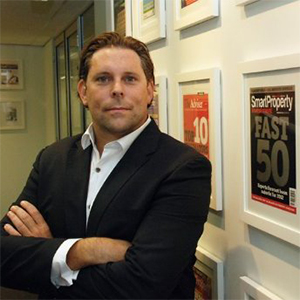Expand your potential as an investor
A smart property investor, writes Phillip Tarrant, is able look beyond the traditional locations and to seek out real growth in diverse markets
The Reserve Bank of Australia’s (RBA’s) decisions late last year to cut the cash rate awoke a dormant property market.
Capital city home values rose by 0.1 per cent in November, according to RP Data, suggesting buyers have begun to re-enter the market after 12 months on the sidelines.
That modest increase in metro values was, however, surpassed by Australia’s regional markets in which property prices grew by 0.3 per cent.
Rismark’s director Christopher Joye says the growth, the best monthly result since December 2010, augurs well for activity in the first quarter of 2012.
“The best proxy for housing demand – the number of new home loans approved for purchasing established properties – has risen robustly every month since its nadir in March,” he says.
He adds that the November result has helped improve the Australian housing market’s year-to-date performance.
In October, RP Data-Rismark reported capital city dwelling values had declined by 4 per cent in the first 10 months of 2011; the November figures amended that to a shallower decline of 3.7 per cent.
Better yet, in raw terms, dwelling values in the capitals only declined by 2.8 per cent in the first 11 months of 2011.
Regional markets performed even better. In the year to November 2011, regional house values were only down by 2.6 per cent in raw terms (2.8 per cent seasonally-adjusted).
According to RP Data’s senior research analyst, Cameron Kusher, the data show there is significant diversity across the capital city housing markets.
“Although home values have fallen across each capital city, Sydney and Canberra have been the most resilient with dwelling values falling by just 0.5 per cent and 1.6 per cent over the year respectively,” Mr Kusher says.
“On the other hand, Brisbane and Melbourne home values have recorded total declines of 7 per cent and 5.6 per cent respectively.
“In November, Sydney, Melbourne, Perth and Canberra produced flat to positive capital gains following the RBA rate cut. By contrast, home values in Adelaide, Brisbane and Darwin softened further.”
This market diversity was highlighted in our FAST 50 report, published in the February issue of Smart Property Investment. Intense media interest in the report reaffirmed for us not only how much Australians love their property, but also how they are hungry for accurate information about the market and how locating that next ‘hotspot’ is in the forefront of investors’ minds.
The capitals and inner city markets were, of course, represented in the report, with city suburbs like Canberra City and Sydney’s Neutral Bay and Ultimo tipped by our expert panel. A majority of hotspots in the FAST 50, however, were either outer ring suburbs or regional locations.
Considering the market’s diversity right now, investors need to expand their searches and identify those areas that are going to deliver growth.
That might just sound like common sense, but I regularly speak to investors who will only invest in one location – such as Sydney’s Eastern Suburbs – but fail to consider opportunities elsewhere.
Our regional markets are delivering solid returns, with good growth prospects for investors right now. So too are locations on the city fringes – a number of Western Sydney locations, for example, made the FAST 50, as well as areas outside Perth city.
To determine the list of hotspots, we sought the recommendations of a panel of property experts, with each location assessed on a range of criteria over and above what the property data were telling us.
We looked at population growth and demographic trends, demand for housing, income levels and wage growth, employment trends, vacancy rates, previous capital growth and current gross rental yields, current and forecast economic data, growth drivers including infrastructure plans, industry development and government plans.
We also considered how diversified the economy was in each area.
While the FAST 50 report has laid the groundwork, investors still need to do a lot of research work themselves. Remember, not every single house or street within a FAST 50 suburb is necessarily going to shine.
The onus is on the investor to understand local market dynamics, the appetite for a particular form of housing and the parts of the suburb that are most in demand.
For investors, research is the bedrock of any property discussion and it’s ongoing – immerse yourself in property, surround yourself with some good advisers and publications, follow a process similar to ours to identify your hotspots and you’ll be well on the way to making your next property investment a smart one.
